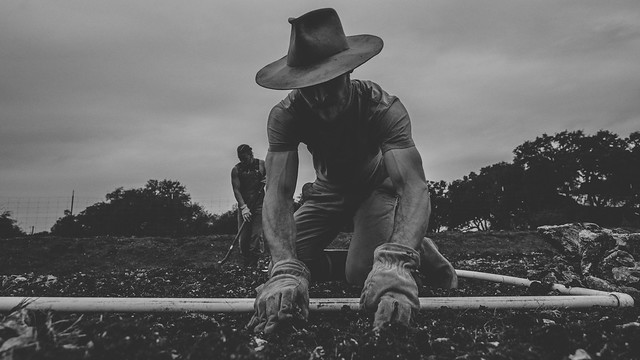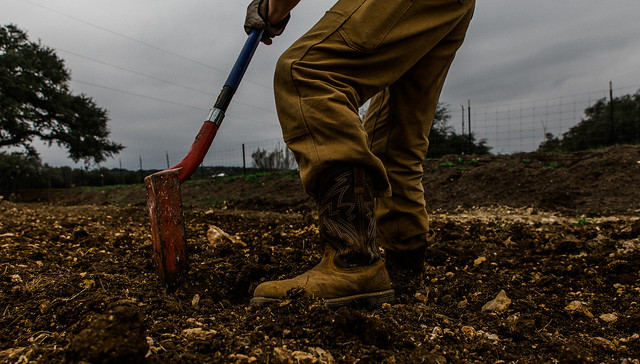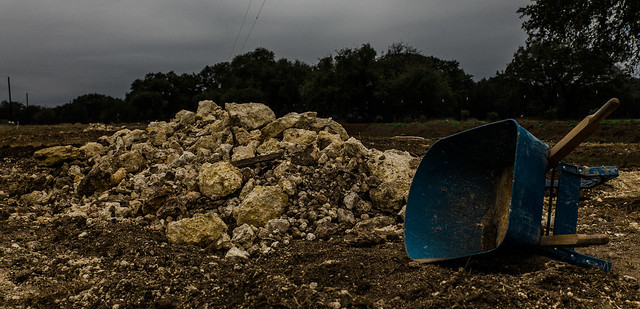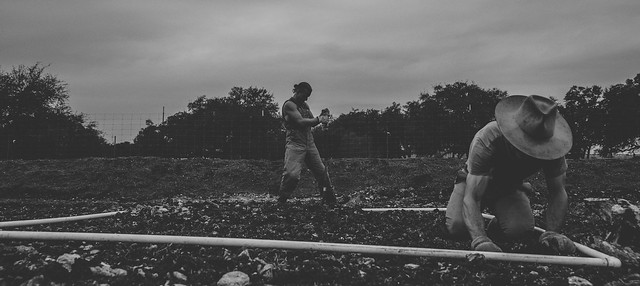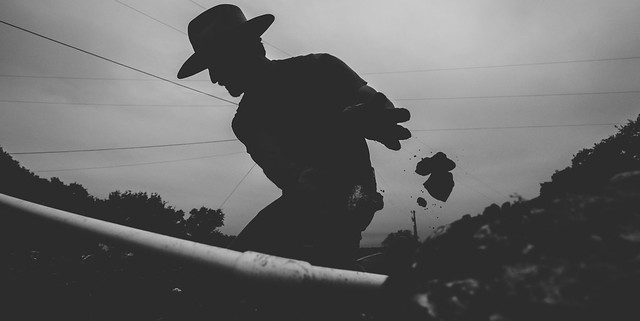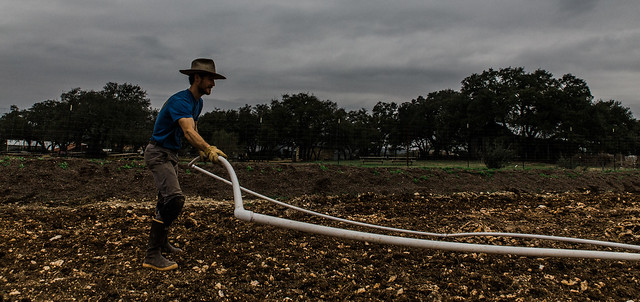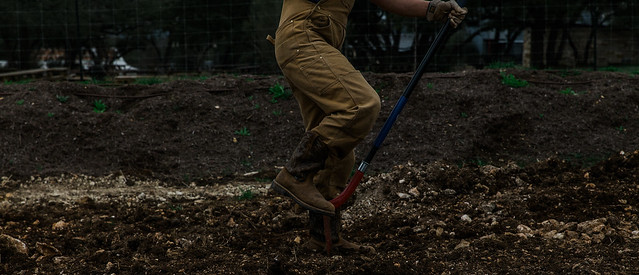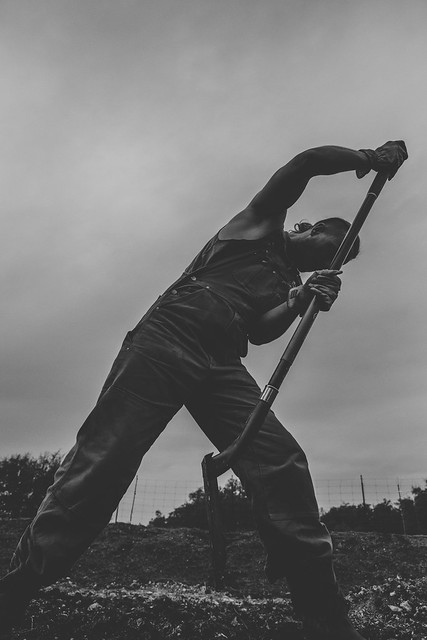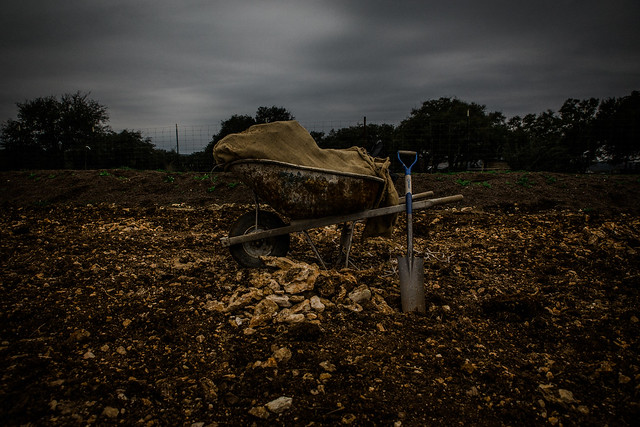Jester King Plants a Vineyard
March 13, 2018
We’re excited to announce the latest development in our farming program here at Jester King — the planting of a vineyard! By the end of March, we will have planted 1,500 grapevines across a 3.1 acres of land, all by hand. Jester King founder Michael Steffing and Farmer Peppy have been working intensely over the last few months removing tons of rocks, digging hundreds of holes and planting grapevines in the soil one-by-one.
So why plant a vineyard?
We love all-things fermentation at Jester King. The transformative ability of native yeast and bacteria — whether the medium be grains, fruit, dairy, meats or vegetables — excites and motivates us. We’ve also developed a passion for beer re-fermented with wine grapes over the years, as well as for wine itself. Although we’re not yet a producer, we take great pride in having an excellent selection of wine at our tasting room that mirrors the philosophy of our beer. Finally, we love the challenge. This is going to be a long, arduous process that will undoubtedly have many setbacks. Having gone through the nearly four-year process of creating our first spontaneously fermented beer, we’re eager for the next exercise in patience while waiting for nature to slowly unfold what it has to offer.
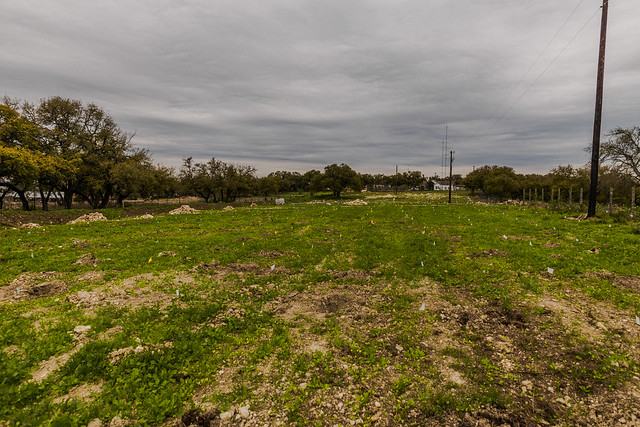
What is our philosophy and inspiration for growing grapes and making wine?
For growing, our philosophy is to respect what naturally does well in central Texas. We’ve decided to primarily plant two varietals — Black Spanish (a.k.a. Lenoir) and Blanc du Bois, which have thicker skins and can stand the Texas heat. The other varietals we’re planting are on a more experimental basis. They include Albariño, Tempranillo, Carignan, Cinsault, Counoise, Dolcetto, Graciano, Grenache Noir, Malvasia Bianca, Marsanne, Mourvedre, Primitivo and Roussanne. Over time, we’ll see what does well and what fails to pan out in our soil.
We’ve decided not to have rows of tightly planted vines. Many vineyards prefer tight spacing for higher yields and for the ability to machine harvest. Typically, tight spacing results in growers training their vines upwards in order to lessen excessive shading of neighboring vines. With our setup, the grapes will be given all the room in the world to grow and coexist with the other plants we seeded on the land (legumes, native grasses, clover, radish, wildflowers, etc.) We are creating a landscape of plants that will all benefit from each other and will benefit the soil. It won’t be the prettiest vineyard in the world. Ours will look kind of “shrubby” and unkempt compared to the idyllic notion of a vineyard. But if all goes well, it should be sustainable and produce some really excellent grapes.
We also watered each vine by hand with a mixture of water and wild yeast and bacteria from the brewery. The indigenous yeast and bacteria in our beer originally came from the land years ago, and we’ve gone full-cycle by reintroducing it to our land. Our intent is to microbially influence the soil and ultimately the character of the grapes. We only intend to water the grapevines for the first two years or so, and we’ll rely on dry farming after that. We’ve built a berm to hold rainwater in the vineyard, and we’ll graft and replant the vines that prove to be the most heat and drought resistant over time.
As far as making wine, it’s fair to say our philosophy is summed up by our good friend Lewis Dickson of La Cruz de Comal Wines. Lewis is fond of saying, “My secret is that there is no secret.” In other words, he resists the urge to manipulate the process and control all the inputs, so as to have mastery over the outcome. Much like how we make beer, he’s content to give the wine a nice home and allow it to make itself. As we ultimately make wine one day, we’ll embrace principles akin to how we make beer, such as spontaneous fermentation, dryness, acidity, minimal oak character, and interesting yeast complexity.
How have we gone about planting?
The hardest part has been the rock removal. Our farm is located on the Edwards Plateau and is known for its limestone. Michael and Peppy, along with the help of the Jester King family, have been toiling away all winter removing tons and tons of rocks by hand. The video below sums it up. While the limestone should one day influence the character of the wine, there were still a great deal of rocks that needed to be removed to plant a vineyard. Michael and Peppy created a system where they’d place a square on the ground, push all the rocks to the corners, then dig a hole in the middle and plant a grapevine. This tedious and laborious process has taken them all winter. Luckily for them, they’re just about finished as of this writing, just in time for spring.
What to expect in the future?
After working intensely for the last few months, the next step will be patience. We won’t hazard a guess as to how many years it will be before our grapes will be ready. We seek to one day harvest the grapes from our vineyard to referment with our beer, as well as to make natural wine. In the meantime, we look forward to you visiting the vineyard to see how its progress slowly unfolds!
Cheers,
Peppy, Farmer
Michael Steffing, Founder
Jeffrey Stuffings, Founder
Traci Walker, Wine Coordinator, Assistant Tasting Room Manager

Farmer Peppy

Mixture of water and our indigenous culture

Grapevines

Moving rocks to the corners, planting in the middle

JK team helping out

Planted grapevine
